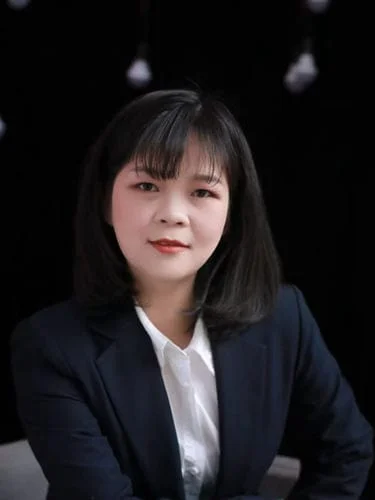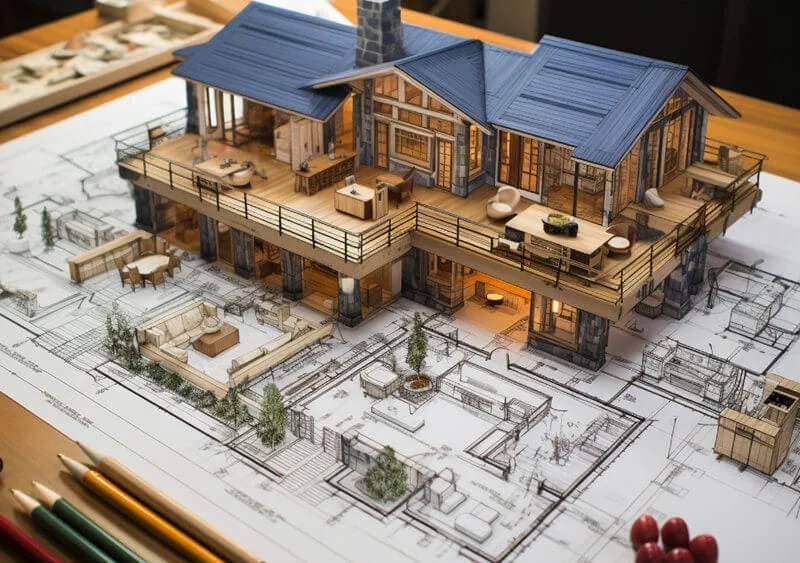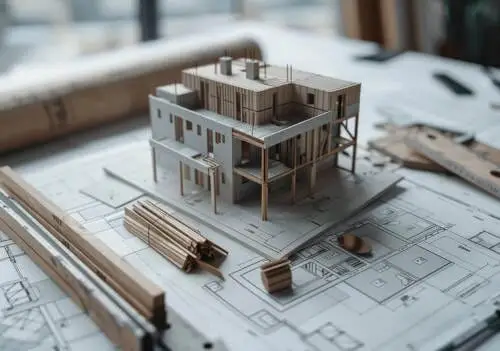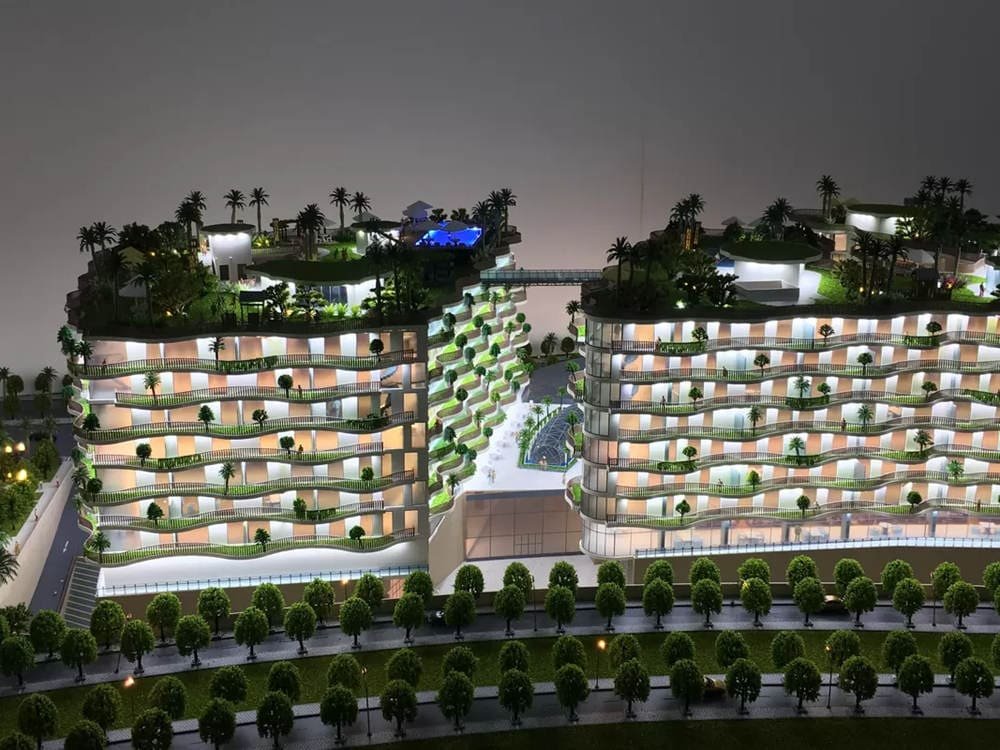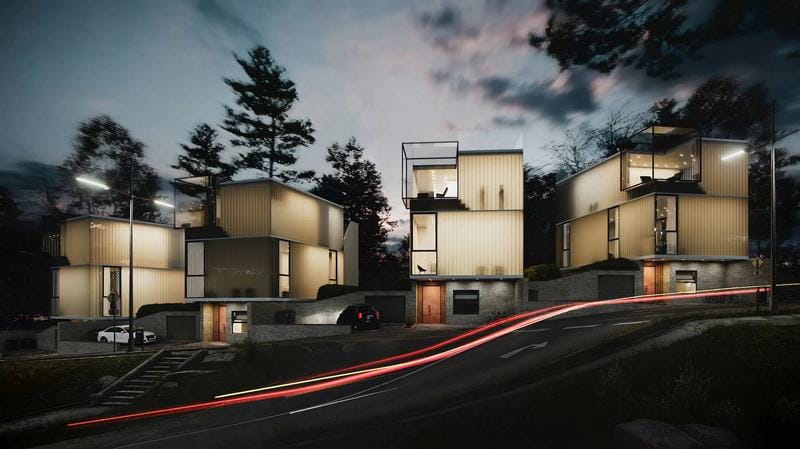目次
質問 #1: “私のプロジェクトと規模と類型の両方が似ているプロジェクトを見せてもらえますか, クローズアップ写真も含めて?”
なぜ重要なのか
これは最も重要な冒頭の質問です。 関連性と深さ 彼らの経験の. どの企業でも、自社の最高のプロジェクトを 1 つだけ紹介できます。. しかし、彼らが特定の課題に対処できるという証明が必要です。 あなたの プロジェクト. 小規模を得意とする会社, 抽象的な 競争モデル 高級住宅の販売モデルに必要な超現実的な詳細のスキルセットを持っていない可能性があります. 同様に, 単一の高層タワーの専門家は、広大なタワーを施工する経験が不足している可能性があります。, 地形的に複雑なマスタープランモデル. の証拠が必要です 関連する 専門知識.
専門家のようにポートフォリオを分析する方法
写真を提供してもらったとき, ちらっと見るだけではなく. それらを精査してください. 探す:
- 縫い目とジョイント: さまざまな部品間の接続はきれいでシームレスですか, または接着剤の跡や隙間が見えますか?
- 塗装仕上げ: 塗装の仕上がりは滑らかで均一ですか, 車の車体のように, それとも不均一ですか, 斑点のある, またはブラシの跡が表示される?
- 造園のリアリズム: 木々は独特に見えますか, 本物のような要素, それとも繰り返しですか, ジェネリック “ロリポップ” 木? 草の質感は納得できるものですか?
- エッジ品質: レーザーカットされたコンポーネントのエッジは鋭くてきれいですか?, それとも焼けて荒れているのか?
何を聞くべきか
- グリーンフラッグ: 自信のある, “はい, 絶対に。” 彼らは、規模と建物のタイプの両方であなたのプロジェクトと直接比較できる、ポートフォリオから 2 つまたは 3 つのプロジェクトをすぐに紹介できるはずです。. 細部までズームインできる高解像度ギャラリーへのアクセスを積極的に提供する必要があります。. これは彼らが自分たちの職人技に誇りを持っており、隠すものがないことを示しています.
- レッドフラッグ: 曖昧な答えや言い逃れ. 美しくてもまったく関係のないモデルを見せられた場合, それは彼らに適切な経験が欠けていることの表れです. クローズアップショットを提供することに抵抗がある場合は、十分に注意してください。; それは多くの場合、詳細が精査に耐えられないことを意味します. これらの要素のバランスにどのようにアプローチするかが重要です, 私たちのガイドで検討しているトピック スケールとディテールの完璧なバランスを見つける.
質問 #2: “あなたの施設について説明してください. あなたのチームの能力はどれくらいですか, そしてどの主要テクノロジーが真に社内にあるのか?”
なぜ重要なのか
この質問は、彼らの運用能力と信頼性の核心に切り込みます。. 大規模開発のモデルは、大量のリソースを必要とする複雑な製造プロジェクトです。. 従業員が数人の小さな店舗ではボトルネックになりやすい, あまりにも多くの仕事を引き受けたり、主要なチームメンバーが不在になったりすると遅延につながる. さらに, 3D プリンティングやレーザー切断などの重要なプロセスを外部委託している企業は、品質管理が不十分です。, タイムライン, そしてトラブルシューティング.
アウトソーシングの隠れたコスト
模型メーカーがキー製作を外注する場合, あなたはいくつかの隠れたリスクに直面しています. 初め, フィードバックはサードパーティを通じて中継されるため、通信に遅延が発生します。. 2番, 品質管理が細分化される, プロセス全体を監視する単一の主体が存在しない. ついに, アウトソーシングされた作業に対してマークアップを支払っている. 垂直統合型, 社内運用によりこれらのリスクは完全に排除されます.
何を聞くべきか
- グリーンフラッグ: 詳細, 詳細, 詳細. 世界クラスの企業は自社のインフラストラクチャを誇りに思うでしょう. 数字で答えを探す: “30,000 平方フィートの当社の施設には、以上のチームが拠点としています。 250 熟練した技術者, 職人, とプロジェクトマネージャー. 当社は 5 台の産業グレードの SLA 3D プリンターを運用しています, 大判レーザーカッター10台, 完全な CNC ワークショップ, すべて社内で。” これは、実際の生産能力と生産のあらゆる段階に対する直接制御を実証します。. この社内機能により、以下の完璧なブレンドが可能になります。 モダンなクラフトと伝統的なハンドワーク.
- レッドフラッグ: 漠然, 回避的な言葉遣い. のような答え “当社には高度なスキルを持つチームがいます” または “最新のテクノロジーをすべて使用しています” 具体的でないと意味がない. 彼らがそう言うなら “信頼できるパートナーと協力する” 主要テクノロジーの, あなたは仲介業者と取引しています, これにより、不要なリスクとコミュニケーションの複雑さが追加されます.
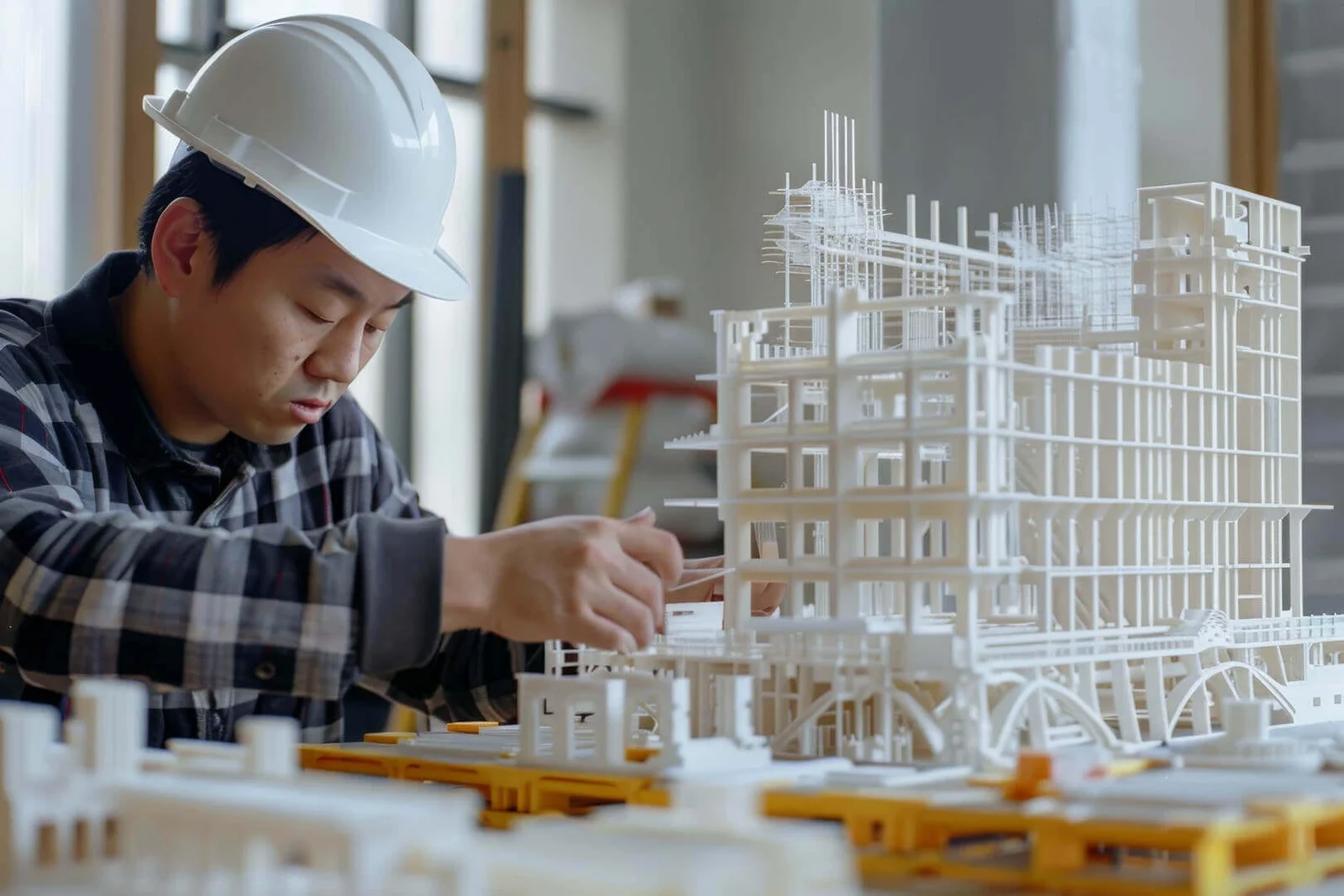
質問 #3: “私の日常の連絡先は誰になりますか, 通信プロトコルについて詳しく教えていただけますか?”
なぜ重要なのか
あらゆる複雑なプロジェクトに対応, 特に国際協力の場合, コミュニケーションは成功の基礎です. 一枚もなしで, ひたむきな, 知識豊富な連絡先, 混乱が起こる. フィードバックが一連のメールの中で埋もれてしまう, 相反する指示が与えられる, そして誰も最終的な責任をとらない. あなたの船には船長が必要です, 委員会ではありません.
プロのプロジェクトマネージャーに期待すること
優れたプロジェクト マネージャーは、毎週写真を送信するだけではありません。. 彼らはあなたの戦略的パートナーです. 積極的なアドバイスを提供できるはずです, 潜在的な問題が問題になる前にフラグを立てる, そして解決策を提供する. 彼らは建築図面を理解し、設計意図について知的に会話できる必要があります。, 単にメッセージを受け取る人として機能するだけではなく.
何を聞くべきか
唯一受け入れられる答えは、専任のプロジェクトマネージャーを必要とすることです (午後). 専門的な通信プロトコルは次のようになります。:
- シングル, 専任の PM: あなたの言語に堪能で、すべての連絡窓口となる担当者を 1 名割り当ててください。, 最初のファイル提出から最終納品まで.
- スケジュールされたアップデート: 定期的な更新スケジュールを守る必要があります (例えば。, “毎週金曜日に写真付きの詳細な進捗レポートが届きます”).
- 正式なフィードバック ループ: あなたがフィードバックを提供し、それを受け取って理解したことを確認するための明確なプロセスが必要です.
この構造化されたアプローチは、プロジェクトをスムーズに成功させるために不可欠です. これについては、 海外プロジェクト管理ガイド.
質問 #4: “クライアントの承認を得るために、具体的なマイルストーンを含む詳細なプロジェクトのタイムラインを提供してもらえますか?”
なぜ重要なのか
簡単です “配送日” 約束です; 詳細なスケジュールは計画です. 専門会社はプロセスに基づいて運営されます, 約束ではない. レビューと承認のための具体的なマイルストーンを含む明確なタイムラインにより、透明性が確保されます。, 説明責任が生まれる, 予期せぬ事態が起こらないようにします. 進捗状況を追跡し、適切な段階でフィードバックを確実に反映できるようにします。, 後でコストのかかるやり直しを防ぐ.
何を聞くべきか
明確なチェックポイントを備えた段階的なアプローチを検討してください。. 専門的なタイムラインには次のものが含まれます。:
| マイルストーン | それが何であるか | なぜ重要なのか |
|---|---|---|
| デジタル証明の承認 | 物理的な作業を開始する前に、3D コンピューター モデルを確認して承認します。. | これが最も重要なチェックポイントです. 変更を加えて、図面が正しく解釈されたかどうかを確認するのが最も簡単かつ低コストのポイントです, 重大な構造エラーの防止. |
| 制作途中のレビュー | 組み立て中の主要コンポーネントの写真を受け取ります. | これにより、プロジェクトが軌道に乗っているという確信が得られ、具体化する際の物理的な形式と実質性を確認することができます。. |
| 出荷前の最終承認 | 最終承認のために、完成したモデルの高解像度の写真とビデオのフルセットを受け取ります。. | これにより、あなたは確実に 100% 梱包して発送する前に結果に満足している, あなたに最終決定権を与える. |
この構造化されたワークフローはプロフェッショナルな業務の特徴です. 完全なワークフローは記事でご覧いただけます, 段階的なモデル作成プロセスの内部を見てみましょう.
質問 #5: “国際配送と通関のための具体的なプロトコルは何ですか?”
なぜ重要なのか
あらゆる国際的なクライアントにとって, これは交渉の余地のない専門分野です. 素晴らしいモデルも、バラバラになってしまってはまったくの価値がありません。. “丁寧な梱包” 計画ではありません. グローバル物流を深く理解するパートナーが必要です, 堅牢な箱から税関書類の微妙な違いまで.
安全なクレートの科学
プロ仕様のクレートは人工的に作られたオブジェクトです. 特徴があるはずです “フローティングベース” システム, モデルのベースは内側のプラットフォームにボルトで固定され、衝撃吸収フォームで吊り下げられています。 (ポリエチレンのような) 外箱の壁から. これにより、輸送中の衝撃や振動からモデルを隔離します。. 高価なモデルには、誤った取り扱いを記録するための衝撃センサーが木箱に組み込まれている場合もあります。.
何を聞くべきか
真に経験豊富なグローバル企業は、自社の物流科学について自信を持って詳細に語ります.
- 木箱: カスタムビルドについて説明する必要があります, ISPM 15 準拠した (熱処理された) 木箱, 剛性を高めるためのスチールフレーム, そして多層, モデルを完璧に包み込むダイカットフォームの内部.
- ドキュメント: 正しい商業請求書と調和されたシステムを提供することの重要性について言及する必要があります。 (HS) 遅延なくスムーズな通関を保証するコード. これは深い専門知識を示しています.
- 保険: すべての荷物がドアツードアの対象であることを確認する必要があります。, オールリスク保険.
“アマチュアが梱包について語る; 専門家が物流について語ります。”
このプロセス全体は非常に重要であるため、このプロセスに完全なリソースを投入しました. あらゆる詳細を学びましょう モデルを安全に国際輸送するための究極のガイド.
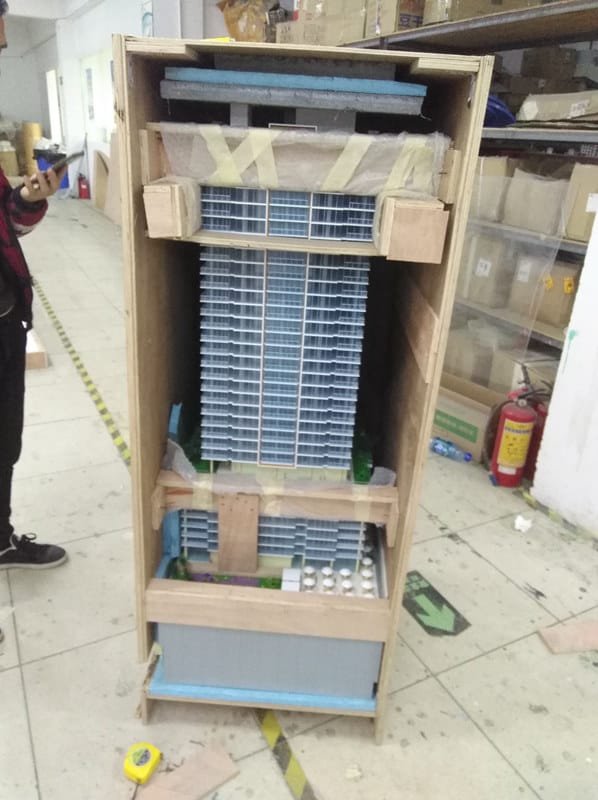
質問 #6: “主なコスト要因を項目化した見積もりを提供していただけますか? 変更指示に関するポリシーは何ですか?”
なぜ重要なのか
この質問は財務の透明性に関するものです. シングル, 不透明な一括価格により、膨らんだコストが隠蔽されたり、何が含まれるかが曖昧になる可能性があります. 項目別の見積もりにより、価値に基づいた意思決定が可能になります. 特定の機能のコストへの影響を確認できます (複雑な照明システムのような) 予算に合わせて範囲を調整します. さらに, 明確な変更指示ポリシーは成熟した兆候です, 専門的なビジネス.
一般的なアドオンを理解する
基本料金にすべてが含まれるわけではないことに注意してください. 透明性の高い見積もりには、次のような一般的なアドオンのコストが明確にリストされます。:
- アクリル製の保護ダストカバー.
- ディスプレイ用の特注の台座またはスタンド.
- 輸送用の箱と運賃.
- インタラクティブな照明や技術的特徴.
何を聞くべきか
- 引用: 専門的な見積もりにより、コストが論理的なカテゴリに分類されます: 本館構造, 現場作業 & 造園, 照明パッケージ, アクリルカバー, カスタムクレート & 配送, 等. 各項目について喜んで説明してくれるはずです.
- 変更指示: 優れたパートナーは正式な変更要求プロセスを実行します。. マイルストーンが承認された後に変更が要求された場合には、その旨を説明する必要があります。, 彼らはまずコストとスケジュールへの影響を評価します, 次に、続行する前に明確な文書を提示して承認を求めます. このプロセスは公平であり、双方の誤解を防ぎます。.
これらの各項目に何が含まれているかを完全に理解するには, 私たちの詳細なガイド, 開梱 5 建築モデルの価格設定の重要な要因, 必読です.
質問 #7: “美的目標と予算のバランスを取るために、材料の選択にどのようにアプローチしますか?”
なぜ重要なのか
この質問は、単なる受注者と貴重なコンサルタントを分けるものです. 製造業者は、どのような材料が必要かを尋ねるだけです. 真のパートナーはまずあなたの目標について尋ねます. 厳しい展示会環境または空調管理された高級品販売ギャラリーのモデルです? 求められる美学は超現実的ですか、それとも抽象的ですか? その後、予算内で効果的に目標を達成できる教材を推奨します。.
何を聞くべきか
コラボ先を探そう, ソリューション指向の対応. さまざまな素材や技術の長所と短所について話し合うことができる必要があります. 例えば: “ファサード用, 非常に精密なレーザーエッチングされたアクリルを使用することもできます。. しかし, より複雑なテクスチャをキャプチャしたい場合, 当社の高解像度 SLA 3D プリンターの使用をお勧めします。, わずかに高いコストでより詳細な情報を提供します. 両方の例を見てみましょう。” これは彼らがあなたの成功について考えていることを示しています, 生産プロセスだけでなく. 適切な材料は、次のようなモデルを作成するために重要です。 不動産の売上を劇的に増加させる. さらに詳しく知るには, 私たちの完全なものを探索してください モデルの材質と仕上げに関するガイド.
| ファサードの特徴 | プレミアムオプション | バリューエンジニアリングされたオプション | 主な違い |
|---|---|---|---|
| 複雑なパターン | SLA 3D プリント樹脂 | レーザーエッチングされたアクリル | 3D プリントは真の深みと質感を提供します; エッチングは平らな表面上でそれをシミュレートします. |
| 水の特徴 | ソリッドキャストアクリルブロック | 層状樹脂注入 | キャストアクリルは完璧な透明度と深みを提供します; 注がれた樹脂は効果的ですが、小さな欠陥がある可能性があります. |
質問 #8: “提供してもらえますか 2-3 最近の, 私が話すことができる関連するクライアントの紹介?”
なぜ重要なのか
これは彼らの主張を試す究極のテストだ. ポートフォリオは最終製品を示します, しかし、リファレンスは経験全体、つまりコミュニケーションについて教えてくれます。, プロセス, 信頼性, そして彼らがどのように課題に対処したか. 評判の良い会社であれば、誇りを持って、満足している顧客とあなたを結び付けることに積極的であるはずです。.
参考人に尋ねる高度な質問
電話で問い合わせを受けたとき, 基本を超えていく. 次のような質問をしてください:
- “プロジェクト中に発生した課題と、チームがそれにどのように対処したかについて説明していただけますか?”
- “最終結果と比較して、最初のスケジュールとコストの見積もりはどの程度正確でしたか?”
- “プロジェクトマネージャーはコミュニケーションに積極的でしたか?”
- “あなたの経験に基づいて, 彼らの最大の強みは何ですか?”
何を聞くべきか
- グリーンフラッグ: 即時 “もちろん. お住まいの地域の最近のクライアント数名に確認させてください, 彼らの連絡先情報を送ります。” これはクライアントに対する自信と敬意を示しています’ プライバシー.
- レッドフラッグ: ためらい, 言い訳をする (“私たちのクライアントは非常にプライベートです”), または連絡先情報を記載せずに書面による紹介文のみを提供する. これは、顧客との関係が彼らが主張するほど強くない可能性があることを示す重大な警告サインです。.
質問 #9: “プロセス全体を通じてどのような品質管理チェックが行われているか?”
なぜ重要なのか
品質管理はラインの最後で行われる単一のイベントではありません. 自動車であれ、建築模型であれ、世界クラスの製造では、プロセスのあらゆる段階で品質チェックが統合されています。. これ “品質の構築” このアプローチにより、小さなエラーが大きな問題になるのを防ぎ、完璧な最終製品を保証します。.
最終 QC チェックリスト
最終検査は厳格なプロセスでなければなりません. 専門会社のチェックリストには構造的完全性のチェックが含まれます (緩んだ部品はありません), すべての照明および電子コンポーネントの完全な機能, 承認された塗料サンプルに対する色の精度 (例えば。, Pantone または RAL コード), 承認された 3D モデルに対する寸法精度.
何を聞くべきか
専門会社が多点QCシステムについて説明します, だけではありません “最終検査。”
| QCステージ | 何が起こるのですか | なぜそれが重要なのか |
|---|---|---|
| デジタルQC | 上級技術者が 3D モデル ファイルを送信する前にピアレビューします。. | 解釈エラーを発見し、デジタル基盤が完璧であることを保証します. |
| 製造品質管理 | コンポーネントはレーザー カッターや 3D プリンターから取り出されるときに精度がチェックされます。. | 欠陥のある部品が組み立て段階に入るのを防ぎます. |
| 組立QC | チームリーダーがサブアセンブリを検査する (例えば。, 一枚の床板) 統合される前に. | 構築全体を通して適切なフィット感と仕上がりを保証します. |
| 最終QC | プロジェクトマネージャーは最終的なプロジェクトを実施します。, 多点チェックリストに照らした包括的な検査. | 完成したモデルが確実に完成することを保証します。 100% 承認された計画を提示される前に正確に反映する. |
質問 #10: “地元のサプライヤーや他の世界的な競合他社ではなく、なぜ貴社を選ぶ必要があるのか?”
なぜ重要なのか
これがあなたの最後です, 価値提案を提供するための無制限の招待状. それは彼らの自信を試すテストだ, 彼らの自己認識, そして競争環境についての理解. 優れた企業は、何が自社を他と差別化し、より優れたものにするのかを正確に知っています. 彼らの答えから彼らのビジネス哲学について多くのことがわかります.
コストとの差別化. 価値
彼らが答えをどのように組み立てるかを注意深く聞いてください. **コスト**を重視する企業は単純にこう言います。 “私たちはもっと安いです。” **価値**を重視する企業が自社のプロセスを説明します, 品質, 信頼性が高いと投資収益率が向上します, たとえ最初の価格が絶対的な最低価格でなくても、. 安心感と優れた結果を売りにしています, 単に低価格なだけではなく.
何を聞くべきか
世界クラスの答えが明らかになる, 簡潔, そしてあなたにとってのメリットに焦点を当てました, クライアント. このように聞こえるはずです:
“お客様が地元のショップよりも私たちを選んでいるのは、 規模と技術 より高いレベルの詳細と複雑さを提供できるようになります, 多くの場合、より速いタイムラインで. 彼らは他の世界的な競合他社ではなく当社を選んでいます。 証明された, リスクのない物流プロセス そして献身的なサービスへの私たちの取り組み, すべてのクライアントのエキスパート プロジェクト マネージャー. ブティック企業のパーソナライズされたコミュニケーションを犠牲にすることなく、世界的な製造規模のメリットを享受できます。”
私たちはこの質問に対する答えに自信を持っています. 当社の独自の価値提案について詳しくは、次の記事をご覧ください。 中国の利点.
結論: パートナーシップを成功させるための青写真
これら 10 の質問は単なるチェックリストではありません; これらは、潜在的なモデル作成パートナーの真の能力とプロフェッショナリズムを明らかにするために設計された診断ツールです。. 深さ, 透明性, そして彼らの答えに対する自信は、これまでに精選されたポートフォリオよりもはるかに明確な全体像を描くでしょう。.
覚えて, あなたはただミニチュアの建物を買うだけではありません. あなたは重要なマーケティング資産に投資し、専門的なパートナーシップを締結しています. このレベルの徹底的なデューデリジェンスを実施することで、, リスクを軽減し、自信を持って前進できる, あなたのビジョンを卓越性と信頼性をもって実現するための真の装備を備えたチームがいることを知る. あなたは成功のためのパートナーを選んでいます, プロセス全体を通して安心感を確保する.
あらゆる質問を歓迎するチームと提携する準備ができています?
私たちは完全な透明性を信じており、自分たちのプロセスに誇りを持っています。, 私たちの人々, そして私たちの結果. すべての正しい答えを持っているチームと提携する準備ができている場合, ぜひ私たちを試してみてください.
